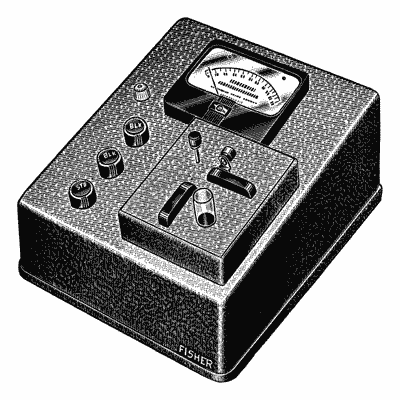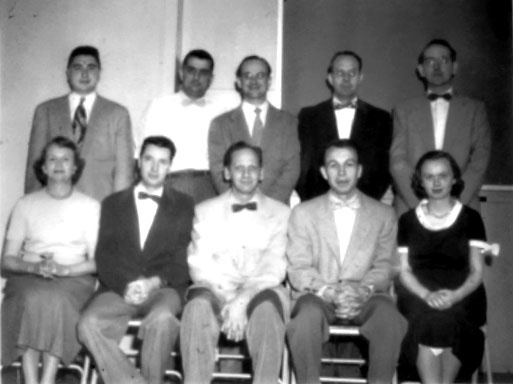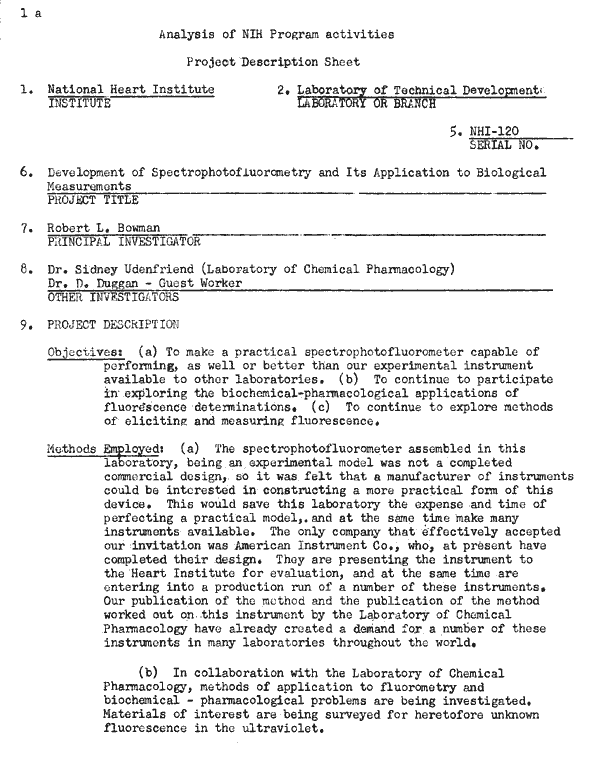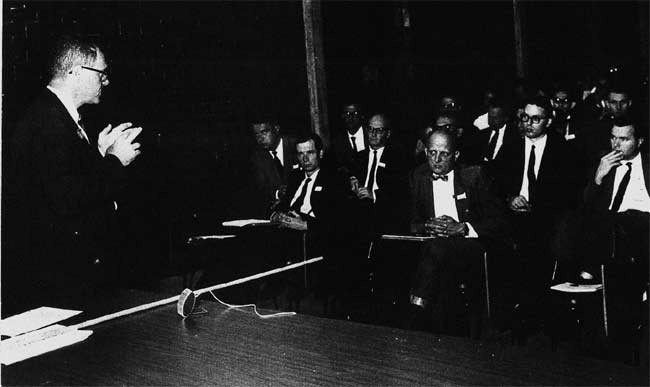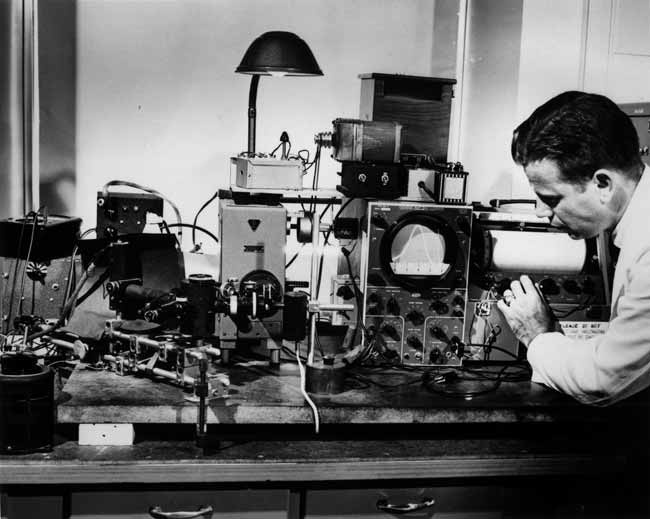...
| Div | ||||||||||
|---|---|---|---|---|---|---|---|---|---|---|
| ||||||||||
|
The Move to the NIH (1949)
| Div | ||||||||||
|---|---|---|---|---|---|---|---|---|---|---|
| ||||||||||
|
Anything Glows (1950-1955)
| Div | |||||
|---|---|---|---|---|---|
| |||||
|
...
|
AMINCO Steps In
| Div | ||||||||||
|---|---|---|---|---|---|---|---|---|---|---|
| ||||||||||
|
In the 1950s and 1960s, AMINCO marketed the SPF to the research field. Company sales representatives traveled across the country to train university faculty and other scientists how to use the instrument. The company even launched a newsletter called Fluorescence News.
AMINCO sold out its initial run of twenty-five instruments, an impressive record in the tiny biomedical research market.
| Div | ||||||||||
|---|---|---|---|---|---|---|---|---|---|---|
| ||||||||||
|
...


